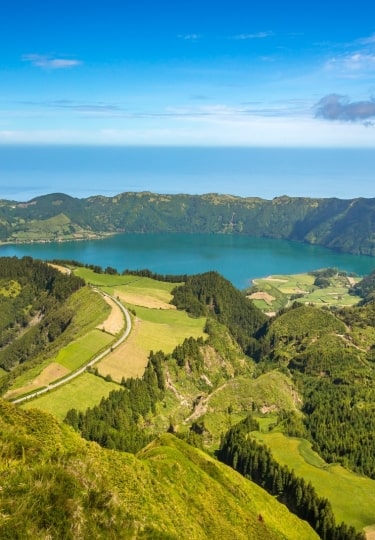The best time to visit the Azores archipelago is late spring and early fall, when temperatures are pleasant and there are plenty of sunshine hours.
Having said this, there is no bad time to visit this subtropical, volcanic island chain; temperatures are mild year-round, tempered by the Gulf Stream, and there are no extremes.
Locals in the Azores joke that you can experience four seasons in one day here, from hot sunshine to mist, wind, and rain. Weather patterns shift quickly out here in the Atlantic, so you’ll need to carry both sunblock and a waterproof jacket on your exploration.
There are several microclimates, too, from lush volcanic valleys to crater lakes, hot springs, and high mountains, which is what makes this diverse landscape so appealing.
Visiting the Azores by Season
Summer
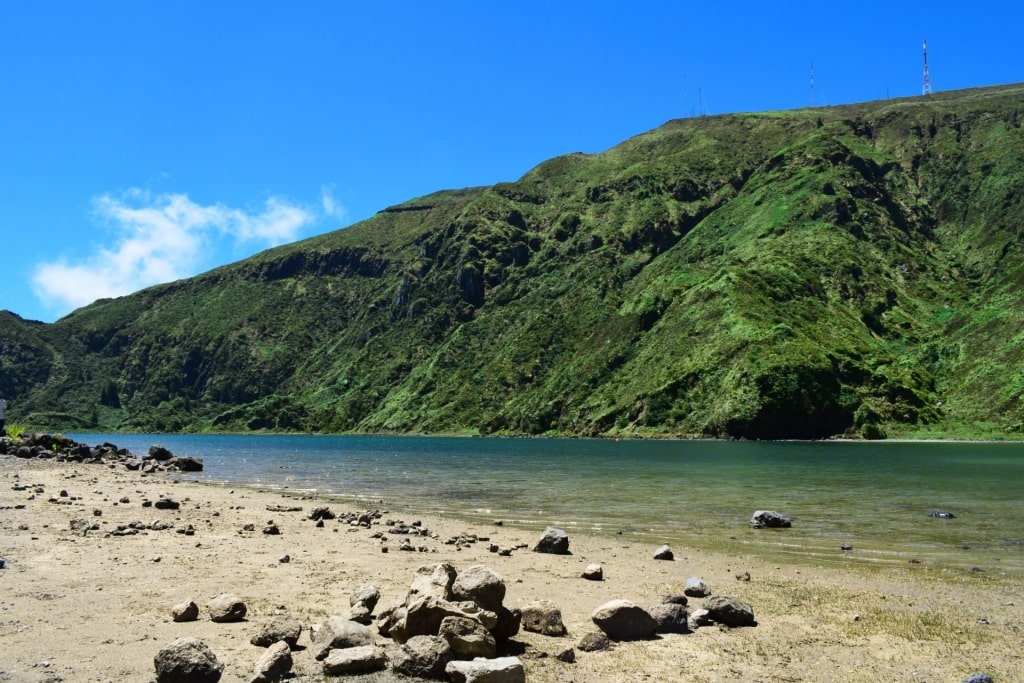
Lagoa do Fogo
Temperatures are mild even in the height of summer. Expect average highs of 66°F (19°C) to 71°F (22°C), with peaks in July and August higher, up to around 78°F (25.5°C).
Summer is the peak time for going to the beach, swimming, and enjoying glorious sunsets. It’s an excellent time to take in the flower-filled landscapes when the hydrangeas are at their most beautiful.
Summer is also a good time for boat trips to look for the islands’ resident pods of sperm whales and dolphins, as the sea is usually calm.
Fall
In fall, from September to November, the sometimes humid heat of the summer lessens. Temperatures in the Azores remain pleasant with flowers still in bloom all over the islands.
Average daily highs range between 69°F (21°C) and 59°F (15°C). Fall is a popular time for hiking, and the sea is pleasantly warm for swimming and watersports.
Winter
Winter in the Azores falls between December and February, with February being the coldest month and December and January the wettest. Precipitation may fall as snow on Mount Pico, an island to the west of São Miguel, the principal island of the chain.
The sea can be rougher during the winter months, so there’s less opportunity for boat trips to spot marine mammals. Temperatures are still mild, though, with average daily highs ranging between 57°F (14°C) and 60°F (16°C).
Spring
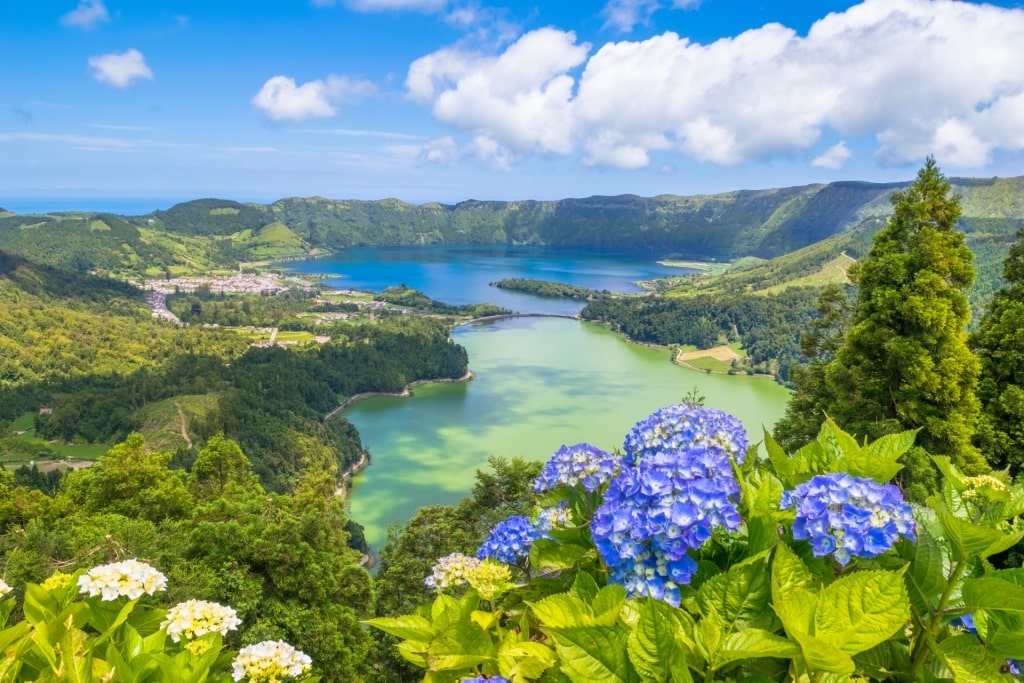
Lagoa das Sete Cidades
Spring is the best time to go to the Azores, as the islands’ many flower species are in full bloom from March. Locals are already enjoying the beaches of the Azores from late May, although the ocean may still feel bracing to the unacclimatized.
Another bonus of spring is that it’s the best time for hiking, with glorious wildflowers lining the many walking trails. Temperatures are beginning to rise, with average daily highs from 57°F (14°C) to 64°F (18°C).
When Is Rainy Season?
Rainfall is common in the subtropical Azores; the landscape is green and lush for a reason. September to March tends to be the wettest time, particularly November, December, and January; December can receive around 4.7 inches (120mm) of rain.
It can, however, rain at any time, from heavy downpours to a light, drizzly mist, so it’s important to be prepared, especially when hiking in the mountains. July and August are the months with the least rainfall.
When Is High Season?
The high season in the Azores is the summer months of June, July, and August, when temperatures are highest, rainfall is low, and a lot of Portuguese and other Europeans from the mainland come here for their annual vacation.
This is when the sea is calm and warm, and conditions for hiking are excellent.
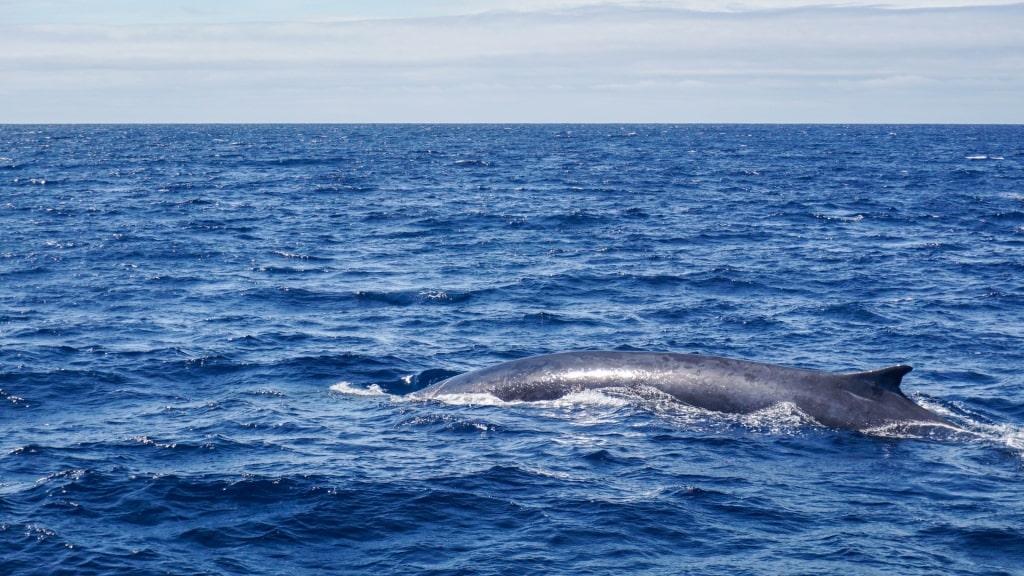
Blue whale
When Is Shoulder Season?
Shoulder season in the Azores is spring and fall. Temperatures are lower and there’s more chance of rain, but the climate is still pleasant enough to enjoy activities like hiking and whale-watching.
April and May are particularly good months for marine mammal sightings; this is when you could spot blue whales, the largest mammal on the planet.
The Azores is one of the best places to go whale watching in the world, and October is the best month to spot humpback whales. Spring and fall are also perfect times for bird-watching enthusiasts, as many migratory species are passing through the islands.
When Is Low Season?
Mid-winter is the low season in the Azores, with shorter days in December, January, and February, as well as more rain and lower temperatures. Visitor numbers are at their lowest in these months, although keen hikers visit the islands year-round.
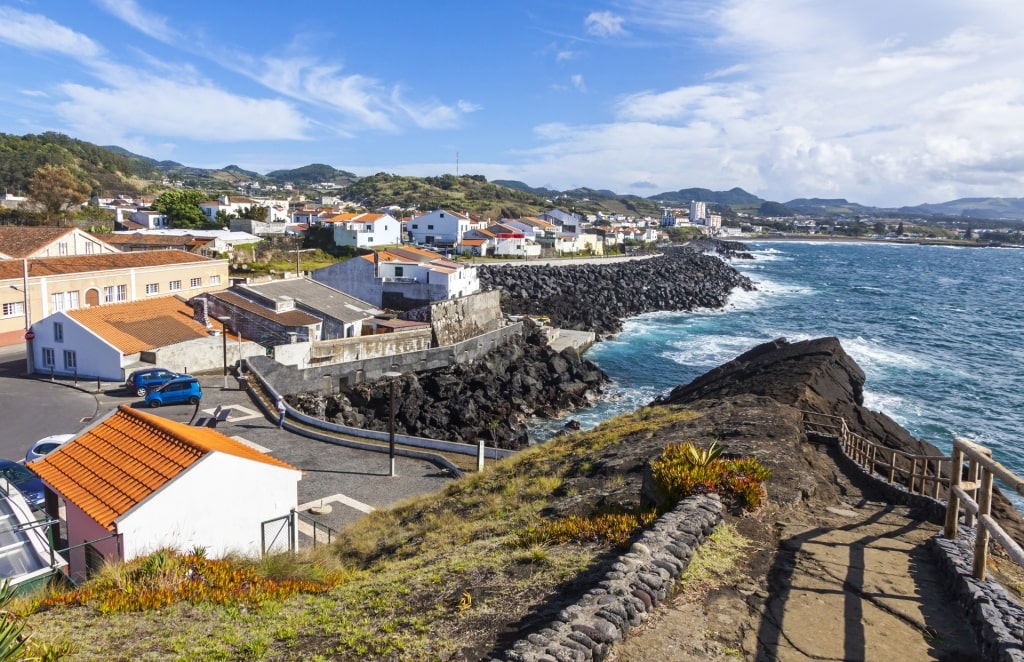
Ponta Delgada
Do you want to discover more about the lush, volcanic Azores? Browse Celebrity’s cruises to the Azores and plan your next voyage.
